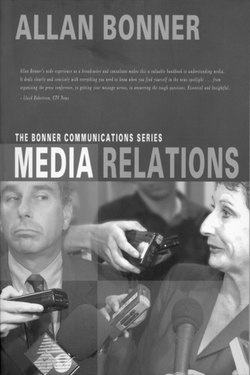Читать книгу The Bonner Business Series â Media Relations - Allan Bonner - Страница 15
На сайте Литреса книга снята с продажи.
Strategic
ОглавлениеImagine a knock on your office door and a senior vicepresident asks you to step outside and give a status report on Project X , Issue Y or File Z to a visiting VIP. You have a strategic decision to make. Do you reply, “Sorry, I’m too busy right now coping with issue C or file D” or do you step out into the hall and give that briefing?
Not surprisingly, most people would give the briefing. Many would do the same even if it were a reporter who walked up at a conference and asked for a quick interview. Few will take the time or trouble to compose themselves, think about what they want to say and then rehearse it.
The most effective way to improve oral communication is to practise out LOUD, but most people have a builtin resistance to doing this, especially if someone else can hear them.
It’s quite different with written communications. A briefing paper for senior management is likely to be written, reviewed and rewritten several times before it’s passed up the chain of command. We tend to treat written communication with much more care and reverence than oral statements — and yet these days, because of the media, oral communications are enormously important. Even when you’re dealing with print reporters, you need to remember that the medium of communication is speech, not print.
Strategic thinking for the media relations function not only means serious thought about what you are going to say, but also attention to what kind of messenger you are going to be. Rehearsing out loud will catch many errors, omissions, bafflegab and just plain boring statements. Rehearsing with a colleague, family member, public affairs specialist or outside consultant will catch more.
We find with our clients that still other obstacles to clear communication emerge when we ask them to draw their message during a practice session. This forces the speaker to make sure the message is concrete and that helps the reporter and audience “see” what’s being discussed.
But the strategy doesn’t stop there. We use something we call 360 degree learning that surrounds the participants and immerses the spokesperson in the message. Participants talk through their messages, draw them, hear others talk about the message and pose questions about the topic.
We find that most spokespeople have a general platitude about an issue. But very few can say how news consumers can benefit from the topic under discussion. Fewer still can give specifics on how they are going about their stated goals. It’s difficult to get this specific, but we insist that spokespeople know how to answer the fifth, sixth and seventh questions asked, not just the first and second. This cannot be done without practice and strategic thinking before walking out to the cameras and microphones.
The other necessary activity is to inject humanity into the performance. Most senior executives spend their lives in front of computer screens, reading documents and talking into the telephone. But to be a convincing spokesperson is a performance art. People buy people first.
I often tell clients that what a TV audience is buying is “eyeballs.” You have to look the reporter or camera in the eye if it’s a doubleender or videographer and be believable. In training sessions, we insist that spokespeople not only demonstrate their knowledge of a topic and the action they are going to take, but also the caring they have for the issue.
Without expressing caring, the spokesperson is just another “talking head,” wasting our time on TV. Caring comes through on radio as well, and a print reporter will judge you, in part, on whether you transmit your caring, compassion and passion about a topic.
